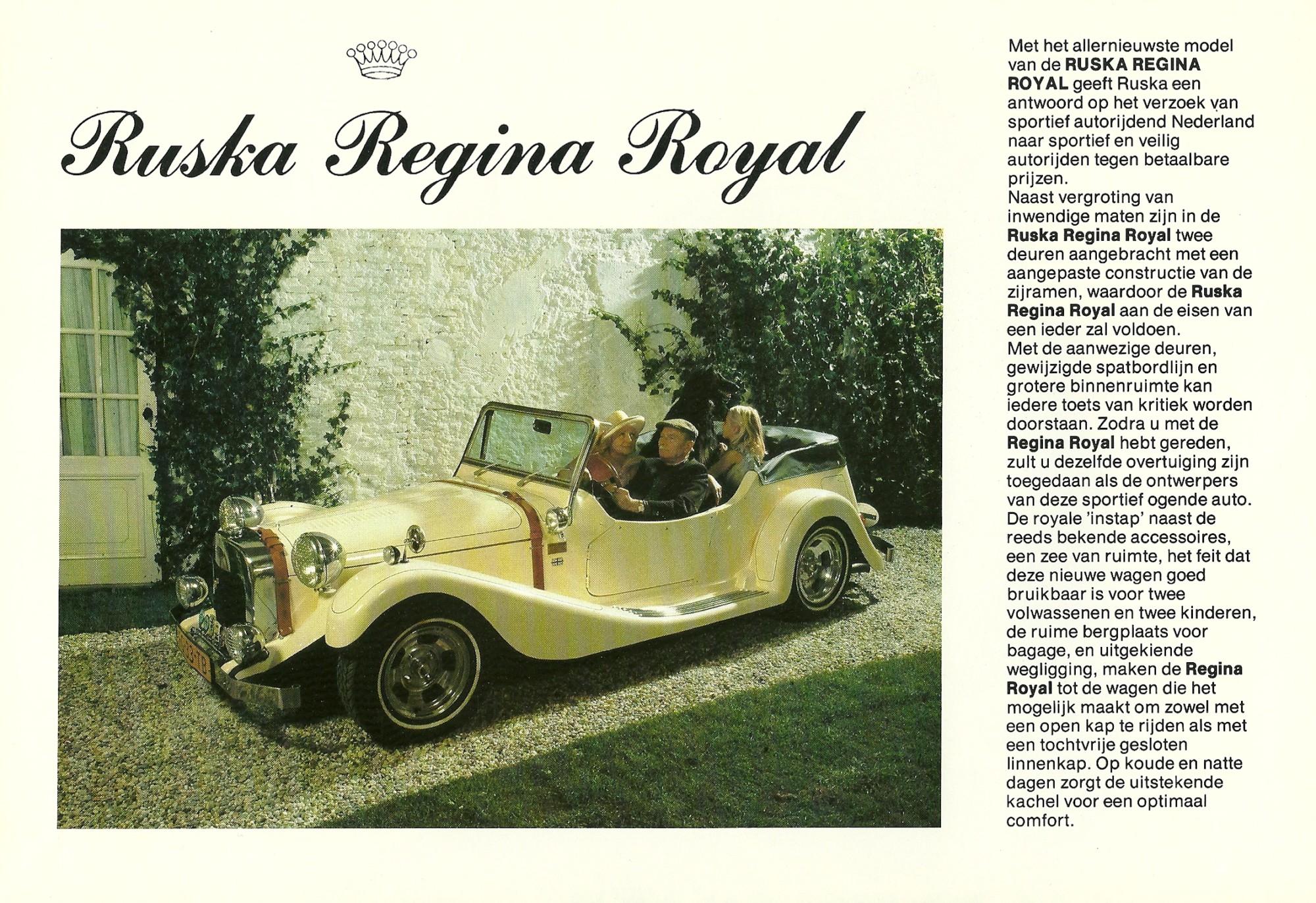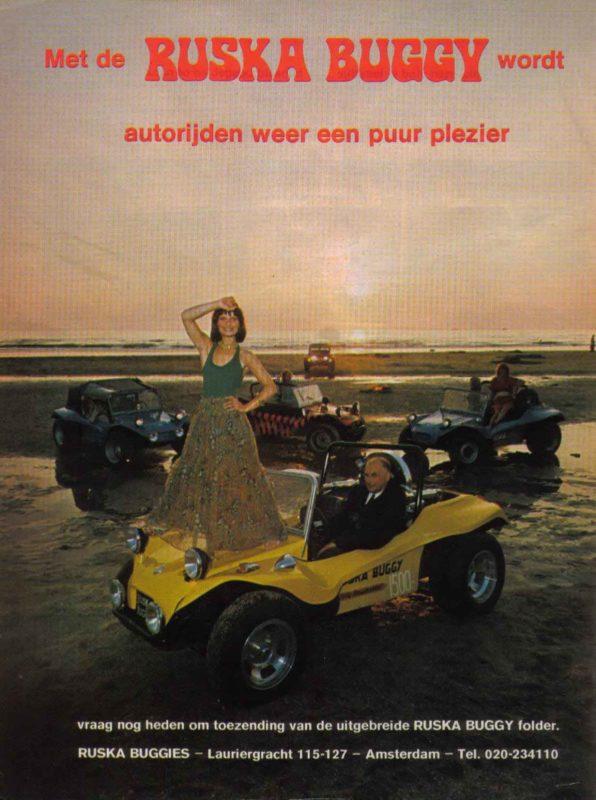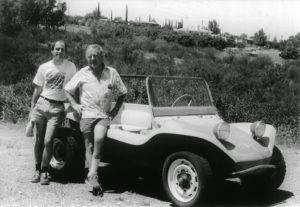Beach Buggies were born in the States where fiberglass-reinforced polyester tubs were placed on truncated VW beetle bases. They were pure 'fun' carts, with a polyester steering wheel that was at least adventurous on the road
Better picked up
So buggies. Once there was a Dutch, internationally famous photographer. For years he was 'the figurehead' of Dutch photography. The man's name was Paul Huf. He portrayed numerous Dutch celebrities, but also became known for his advertising photography (for example, the Craftsmanship is Mastery of Grolsch) and fashion photography.
When Paul Huf discovered a fun car in America called 'buggy', the foundation was laid for Ruska Buggies. In 1969, the enthusiastic Huf asked the Amsterdam garage owner Arie Ruska Sr. to build a buggy for him on a Volkswagen chassis. The bright red-colored car with a Beetle engine quickly attracted attention and to their own surprise, the Ruskas were given more and more orders to make buggies. The company was at least chaotic and the commercial brain behind Ruska was the wife of Arie, Christina, who was rightly acquired the nickname "Christien de Buggyqueen" because of her enthusiasm and sales instinct.
Chaotic but energetic
The aforementioned chaotic working method and total disregard for press information did not prevent the Amsterdammers from being successful. They devised and made a whole series of buggies and, according to current standards, very wrong 'replicas based on shortened or not shortened Beetle bases. At the end of the eighties they supplied the Sprinter, the Super Buggie, the Classica, the Regina, the Regina Royal, the Bugatti and the Sagitta. Ruska was after his importer of the Brazilian Gurgels.
There is no arguing about taste
So we don't start with that. But the Ruska Buggies that stayed closest to the American example appeal to us the most. The Ruska Classica certainly had the look of the Schicht from the comics by Olivier B. Bommel. We would like to call the Regina and Regina Classica slightly despicable. The Sagitta was inspired by the Auburn Speedster. But just like with the Ruska Bugatti, the idea of the examples curtailed something with the VW chassis with its engine in the back.
Look for the differences
The doors of the Regina were fake. They were just 'painted on'. The Regina Royal did have real doors. But whether or not doors: Comfort was not there, with a buggy. And despite the fact that the weather here was and is considerably less than in the Sunshine States, Ruska made such 350 cars a year in its heyday. And that 'making' was taken seriously. Ruska was known as an official Dutch car manufacturer.
End in sight
After a success period of 12 years, the State of the Netherlands came up with the BVB. With that the price advantage of the Ruska buggies disappeared. The successful sales to the Middle East stopped when the war between Israel and Lebanon broke out.
Meanwhile, best wanted
The entire buggy event 'falls' in the Netherlands under the general Dutch buggy club. So also the Ruska buggies. www.algemenebuggyclub.eu. A good buggy is no longer a thing that you score for a grab, but in terms of purchase you are still on the safe side with some winter weather in prospect. Do not purchase a shortened copy without license plate. The RDW requirements for shortened chassis are not feasible. And the buggies now have such classic status that they are also offered to our advertisers.
Photos: Archive, club magazineABC
And recommended: The book The Buggy, our Holy cow. Just search bol.com or boekwinkeltjes.nl and The Dune Buggy Handbook - The AZ of VW-based Buggies since 1964 - New Edition, ISBN: 978-1-845843-78-6






